Naomi Klein: We Have Far Less Time Than We Think
In a new interview with Truthdig, the author of "On Fire" explains why the next year could determine the future of U.S. climate policy.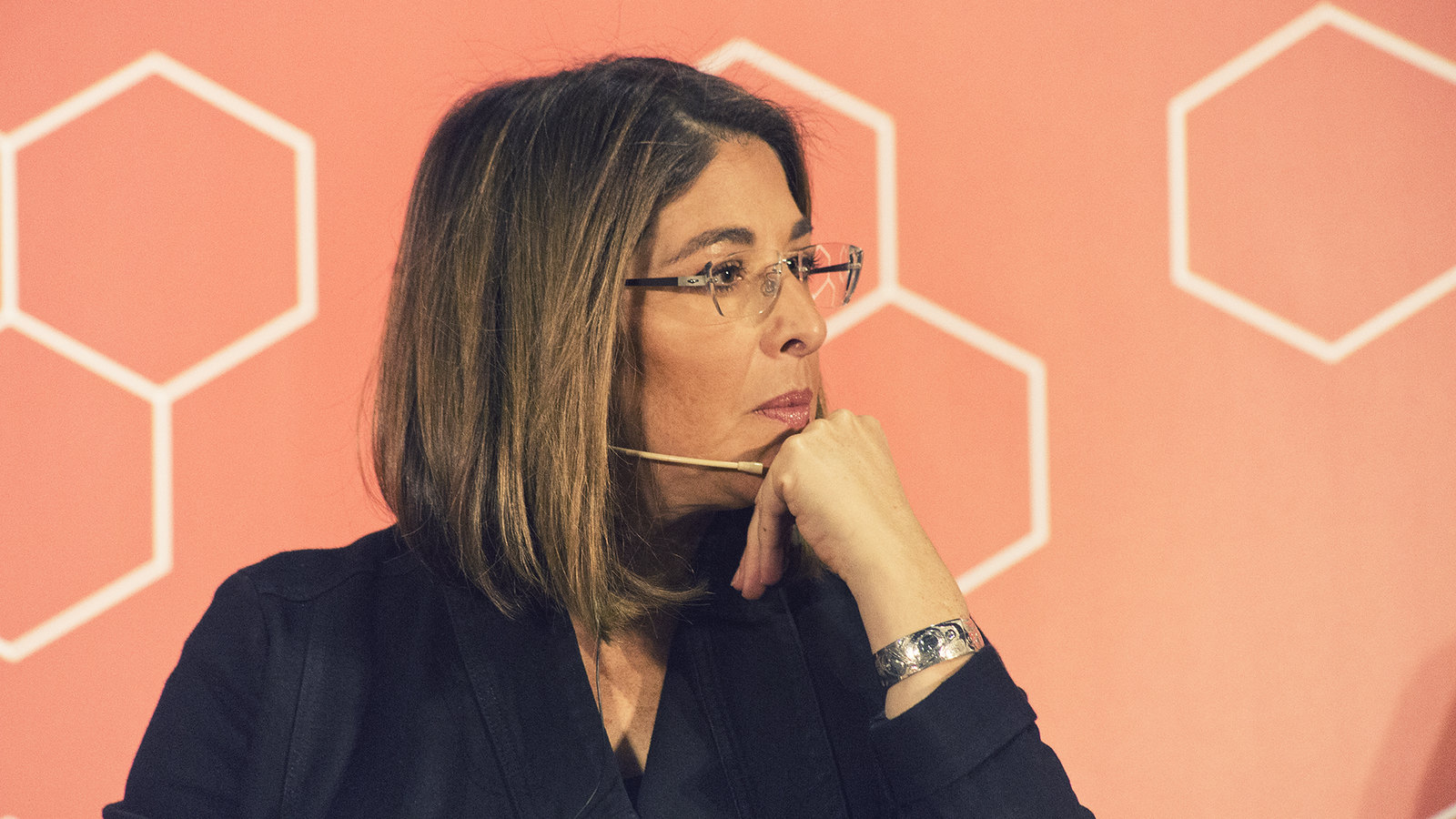 Naomi Klein. (Barcelona En Comú / CC BY-NC 2.0)
Naomi Klein. (Barcelona En Comú / CC BY-NC 2.0)
Canadian author, social activist and filmmaker Naomi Klein is done with “tinkering and denial” as solutions to climate change. As she explains in her new book, “On Fire: The (Burning) Case for a Green New Deal,” America, and the world, is way past the point where a single policy, or even market-based solutions, can cut carbon emissions, increase production of renewable energy, repair broken ecosystems and generally prevent the kinds of climate catastrophe that will hurt the earth and the humans on it.
“We’re all alive at the last possible moment,” Klein writes, “when changing course can mean saving lives on a truly unimaginable scale.”
That means we need a worldwide Green New Deal: policy proposals and programs for avoiding climate catastrophe.
According to Klein, it’s young people, that is, students, not political and business leaders, who see the ability to save lives as an imperative, one that goes beyond individual choice. On Friday, students across the world will leave class to participate in climate strikes, demanding that the adults in power finally take action to combat the impacts of a warming planet.
In fact, the climate movement started by activist Greta Thunberg, a Swedish high school student who kicked off a wave of school strikes in 2018, is the subject of the introduction to Klein’s book. It’s Klein’s opening salvo in a collection of longform essays touching on the need for a Green New Deal, the science behind it and the obstacles to achieving it. Klein also addresses, why, in contrast to previous policies, this needs to be an intersectional movement, one that seeks to address the environmental damage caused by imperialism and racism, by colonial powers who took resources from indigenous communities, hurting the earth along with their livelihoods. Where the original New Deal’s benefits extended mainly to white Americans, Klein is adamant that the Green version be beneficial to all. Teens like Thunberg, Klein believes, understand much better than adults what is at stake.
Some U.S. leaders are also acting on environmental activists’ concerns. In February, Reps. Alexandria Ocasio-Cortez, D-N.Y., and Ed. Markey, D-Mass., unveiled their version of the Green New Deal, which includes numerous emissions cuts, investments in renewable energy and job retraining programs.
As Lisa Friedman wrote in The New York Times at the time, Markey and Ocasio-Cortez were not the first to propose this idea, variations of which have been around for years. Political momentum for the idea, however, became stronger after the 2018 midterms, when, as Friedman says, “a youth activist group called the Sunrise Movement popularized the name.” They laid out a strategy and held a sit-in outside Nancy Pelosi’s office to demand action. Ocasio-Cortez joined them, “lending her support to their proposal and setting the groundwork for what ultimately became the joint resolution.”
Today, Democratic presidential candidates have begun to back the resolution, further building momentum. Klein is hopeful, but thinks America has a lot to learn, both from its own previous mistakes, as well as those of other countries.
On the eve of her new book’s release, Klein spoke with Truthdig’s Ilana Novick by phone about why she wrote the book, public opinion on climate change, why a Green New Deal is good for the economy and why big structural changes to our economy, our consumption, and our culture, are the answer.
The conversation has been condensed and edited for clarity.
Ilana Novick: Why did you want to write this book now?
Naomi Klein: We have a very, very thin path right now, very narrow path to win a really transformational climate plan that’s going under the name the Green New Deal. A lot of things need to align if that is going to become a political possibility. And the next year is incredibly important in the United States. And specifically, in terms of helping elect a candidate that backs a really bold Green New Deal vision, winning the White House, getting started on day one.
So the book is my best effort at marshaling what I consider to be the critical arguments for why this really is the only pathway to lowering emissions in line with science. And arguing that that project must be linked in every way with a plan to reduce every form of inequality: economic, racial, gender and more. That’s why I put it out now.
IN: I wanted to ask about what might be included in a Green New Deal. You write that rather than “tinkering” with individual policies or programs like a carbon tax or a cap-and-trade system, we need wholesale structural change. Why is tinkering with the problem not enough right now?
NK: the important thing to understand is that this discussion is not starting in 2019. The world has been talking about lowering emissions for 30 years. And in that time, many large economies have in fact introduced carbon taxes, cap-and-trade schemes, various market-based approaches to tackle the climate crisis. In the Kyoto Protocol, that pathway, as opposed to a more regulatory approach, is in the text of the agreement, right.
So you have … the European Union has a carbon market, California has a carbon market, British Columbia has a carbon tax. So we’re not having a theoretical debate about which way might work better. We actually have decades of field data about whether this type of an approach lowers emissions in line with what scientists are telling us we need to do, right.
What we know is that you can win some marginal carbon reductions using these types of mechanisms, but you don’t get anywhere near what climate scientists are telling us we need to do if we’re going to keep temperatures below two degrees Celsius, let alone 1.5 [degrees], which they’re telling us should be our target. This is what the IPCC made clear in its landmark report last October, which said that we had just 11 years to cut global emissions in half if we’re going to prevent really catastrophic levels of warming at two degrees. So we know that a carbon tax can’t do it.
IN: Why do these ideas fail to make an impact?
NK: If you look at, for instance, British Columbia, which is often held up as one of the better carbon tax schemes, it hasn’t delivered. Emissions have actually gone up almost every year in British Columbia under the carbon tax. It probably would have gone up more without it. But the point is it’s nowhere close to the kind of sharp emission reductions we need.
The other thing we see with carbon pricing schemes is that they often get undone because of a backlash, because they’re seen as unjust, and often rightly so, right. So in France when Emmanuel Macron introduced a carbon pricing scheme that increased the cost of petroleum for working people at the same time as he had handed out tax cuts to the very rich in France, it led to this massive backlash known as the Yellow Vest movement. … And ultimately, he rolled it back.
IN: What do we need instead?
NK: So, when we’re thinking about what policies work, we have to be asking, first of all, what policies will lower emissions in line with science. But also, what policies are going to get enough popular buy-in that they won’t spark a popular backlash and just be undone. And that’s the key, I think, of a Green New Deal approach, which links the need to lower emissions in line with science with the need to create huge numbers of good union jobs with very strong protections for workers, as well as linking it with services, like health care, Medicare for all, free public education, that are tremendously popular and are going to make life better and easier for huge numbers of people.
IN: You write about a tension between large-scale laws and regulations that would curb emissions and that would try to limit our dependence on oil and natural gas and toward things like renewable energy, and the fact that these regulations will mean job losses. So, it’s sort of pitting the environment against the economy. Why is that potentially incorrect, or if approaches to preventing climate catastrophe can be implemented without economic backlash or not impact jobs?
NK: Right. What the IPCC said last October is that in order to keep temperatures at anything like … I hesitate to use the word safe, because that’s not what they’re saying. Because we’ve gone beyond safe already. I mean, if you look at the climate impacts that we’re seeing with just one degree of warming, [with Hurricanes] in Puerto Rico, in [the Bahamas], in Houston, [and] with record-breaking fires, I mean, we’re already beyond safe levels, right.
But what the IPCC has said is that the best we can hope for at this point is keeping temperatures below 1.5 degrees Celsius. And they said that that would require unprecedented transformations of every aspect of society. So that means housing, transportation, energy, agriculture, and they spelled this out, right. So, if you’re going to transform every aspect of your society, you’re going to create a lot of jobs. And that’s what a Green New Deal is about.
But I think where the jobs versus environment argument gets traction is that I think the environmental movement has historically not paid nearly enough attention to the fact that these green jobs need to be good jobs. They need to be as good as the unionized jobs in the fossil fuel sector that workers would be transitioning from. So I think that it’s absolutely critical that unions are—and other worker organizations, because unions only represent a fraction of workers in this country—are at the table planning what a Green New Deal would look like, what the retraining programs would look like, what the job conditions in this post-carbon economy would look like.
Unfortunately, there’s a lot of mistrust that is well earned, because I think for a long time these jobs in different sectors were really treated as interchangeable. And in fact, a lot of renewable energy jobs are nonunion jobs that pay significantly lower salaries than the jobs in higher carbon sectors where unions have worked over many decades to win some of the best working conditions in the blue-collar workforce.
IN: How do you make sure that workers, and particularly workers of color and women, and other marginalized groups have a seat at the table?
NK: Right. I think it means that the green movement has to be taking on the supposedly green companies that are engaged in union busting, like Tesla, and fighting alongside unions to make sure that green jobs are good, unionized jobs.
It’s also in the text of the AOC, of Alexandria Ocasio-Cortez and Ed Markey’s resolution that there should be not only a jobs guarantee, but that workers should be guaranteed to be paid at the same level, same level of salary and benefits in their new jobs as they were in their older jobs. So that’s in the text of the resolution. These are protections that can and must be built into the transition.
That said, we have to be clear-eyed that no matter what those fighting for a Green New Deal do, there will be a barrage of lies put out by the fossil fuel sector about how this is just going to kill jobs and not replace them with anything, because this is what they do. They have limitless amounts of money to lie. Unfortunately, there are some trade union leaders that have aligned their interests with the owners of these companies, in many cases more than the interests of their own workers and their families. And there needs to be accountability there too.
IN: I also wanted to ask about changes in public opinion when it comes to climate action. I kind of remember, it was vaguely foreseen in elementary school in the late ’80s and early ’90s, and hearing about reduce, reuse, recycle. And then I remember in 2008 at the very beginning of the Obama administration there was more urgency around the issue. And you point to public opinion polls in 2008 suggesting Americans were very concerned about climate change, and then two or three years later, they weren’t. What happened?
NK: Right. When you look at polling around the momentum for climate action, it actually hews very closely to how well the economy is doing. So because the kinds of climate policies that have tended to be on the agenda have been these market-based solutions, like a carbon tax for instance, right, or cap and trade or maybe paying a little bit more for renewable energy, right, what often happens is that people will get scared about the science. A film like “An Inconvenient Truth” will come out. There’ll be a sense of “Yes, we have to do this.” And then there’ll be a recession, right. People will be struggling to hold on to their homes, they will be desperately looking for jobs and facing those daily crises in an economic emergency.
And then what happens is that interest in climate action goes down, because as they say in France, the gilet jaunes [yellow vest] movement, “You care about the end of the world. We care about the end of the month,” right. And so that’s what happened during the Obama years. There was this momentum, but as the recession really began to bite, the momentum, climate action came to be equated with a luxury that you couldn’t afford in a time of economic downturn.
IN: What makes a Green New Deal different?
NK: One of the most overlooked benefits of a Green New Deal-style approach, is that this is an approach to lowering emissions that is modeled off of the most famous economic stimulus of all time, which is the New Deal, right, which was developed as a response to the greatest economic crisis the world has ever faced, which was the Great Depression.
So what that means is that right now there is a lot of … people are telling pollsters that they care about climate change. But we also know that we may face a recession in the next year or two. And if we take the same sorts of approach of carbon tax, cap and trade, we should fully expect whatever momentum has been built now to dissipate if there is an economic crisis. However, if we embrace a Green New Deal approach, which is all about creating jobs, transforming infrastructure, that actually support for it will grow if there is a recession, because the need for those jobs and the need for that kind of economic stimulus will only increase.
IN: Given the political landscape that we’re in and that we don’t have that much time, why is it so important do you think to fight for these larger changes, even given that we don’t have that much time and also that we might need a lot of time?
NK: Look, we have a deadline; we have to pass global emissions in 11 years, right. And when a new administration would be taking office, if all goes well, that would be 10 years. There is no way to achieve that level of emission reduction cuts without a transformation of infrastructure. It’s just not possible. That’s what the IPCC has said. You are talking about changing where we get our energy, how we get our energy, how we move ourselves around, how we grow our food. That’s the only way you get those emission reductions. So it’s not like … nobody’s ever saying this is easy. Nobody is saying that there aren’t massive obstacles. But on the other side, nobody is actually presenting an alternate plan that is in line with science.
IN: One passage in the book that particularly struck me was when you talked to a woman protesting, saying, “The hard truth is that the answer to the question ‘What can I, as an individual, do to stop climate change?’ is: nothing.” I wondered if you could talk a little bit more about that, because I think there is a growing tension between individual actions, like cutting out meat and driving less and trying to lobbying for giant corporations and governments to reduce their carbon emissions, even change their whole business models, to protect the environment.
NK: Well, I think that I don’t think anybody is arguing or I mean anybody serious is arguing that we are going to achieve the levels of emission reductions that we need through voluntary lifestyle changes. There’s no doubt that you can lower your own personal carbon footprint, right, by cutting out meat, by not flying, by not driving or driving electric [cars] powered by renewables. Most people don’t have these choices, and in order for this to add up to the level of change that we need, you would need every single person to voluntarily do it.
But that said, if we look at the historical precedence where we have seen massive societal change, whether it is the New Deal or whether it is the transformations of the American economy during the Second World War, it was absolutely critical that there was a perception of fairness. Meaning that it was not only working people who were being asked to make changes, to make sacrifices, that it was also massive corporations who were being dragged kicking and screaming to also make sacrifices, to also make changes, to also abide by new regulations that impacted their profits.
And that perception of fairness was absolutely critical in terms of people accepting the change. What we see in France with the gilet jaunes movement is that it is precisely the double standard, right, of seeing the tax breaks being given to big polluters and multimillionaires whose carbon footprints are sky high, while people who are already facing all of these stresses in a precarious economy are being asked to pay more.
I don’t think anybody serious seriously is saying voluntary lifestyle changes are going to do it. But I do think that you can make a serious argument that it’s important if you can, to change your lifestyle so that you can see and show others that actually it is possible to live well within our carbon budget. And that is an important kind of lived reality to be able to hold up in the face of all of this scaremongering that you’re going to get from the Fox Newses and all of the fossil fuel talking points that this is about just destroying people’s lives and so on, right. There are going to be sacrifices if we design this well.
We’re also going to have way better public transit. We can have better jobs and better working conditions, better services like for health care and education and a care economy. We can have a renaissance in public art. There are things that will improve. And yes, there are some things that will contract. We have to be honest about that.
Your support matters…Independent journalism is under threat and overshadowed by heavily funded mainstream media.
You can help level the playing field. Become a member.
Your tax-deductible contribution keeps us digging beneath the headlines to give you thought-provoking, investigative reporting and analysis that unearths what's really happening- without compromise.
Give today to support our courageous, independent journalists.
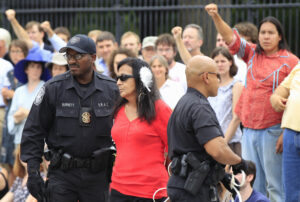
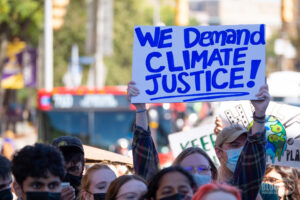

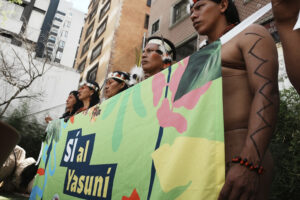
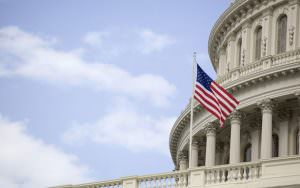

You need to be a supporter to comment.
There are currently no responses to this article.
Be the first to respond.